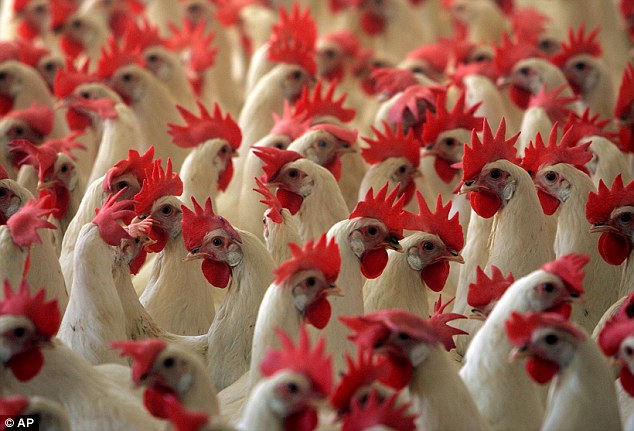Вход / Регистрация
23.12.2024, 00:20
Главная » 2015 Май 27 » Bird flu pandemic alert: Virus could soon be passed from human to human, warns Cambridge professor
10:28 Bird flu pandemic alert: Virus could soon be passed from human to human, warns Cambridge professor |
 The deadly bird flu virus is only two or three mutations away from being infectious between humans, an expert warned yesterday. Such a virus would have a ‘devastating’ impact on the world’s population, similar to the 1918 Spanish Flu pandemic which killed around 50million people. In its current form, avian flu can only be transmitted between birds and from birds to humans. But Professor Derek Smith, of Cambridge University, said studies showed it only needed five amino acid mutations – which happen naturally when the virus evolves – to become transmittable between people. Scientists have discovered two of these mutations are already common and a third has been seen in some parts of the world – meaning it would take just two more. Speaking at the Hay Festival yesterday, Professor Smith said ‘it is within the realms of possibility to get three mutations’ and it was something the international community should ‘worry about’. He warned governments should prepare for a pandemic the same way they would a terrorist attack, adding security experts consider it is ‘more likely’ to happen. The senior World Health Organisation infectious diseases expert said ‘nobody knows’ when the next serious pandemic would be, because they are ‘inherently unpredictable’, but warned flu was still the most deadly virus in existence. ‘Of course healthcare was not as good 100 years ago, but that virus in the lab today is still the hottest virus, it is still the most pathogenic virus that one can see,’ he said. ‘So if that virus emerged today it would be close to as devastating as it was in 1918.’ Professor Smith warned industrial farming of chickens and pigs in developing nations was ‘a great risk’ as it increased the likelihood of viruses mutating to pass between animals and workers. And he voiced concerns that a ban on developing deadly virus strains in the lab means scientists do not know enough about what the virus could do if it evolves. The ban was put in place after scientists – including Professor Smith – at two laboratories created a human-infectious strain of bird flu to international outcry. A version of the bird flu virus H5N1 was first seen in humans in 1997 in Hong Kong. It re-emerged in 2003 and by July 2013 had killed 377 humans. In March 2013, three people in China were reported to be infected with an H7N9 strain and by July 2013 there were 43 deaths. |
| Категория: Epidemic | Просмотров: 1288 | |
| Всего комментариев: 0 | |



